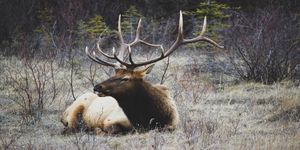How the 2015-2016 El Niño Led to an Increase in Disease
Researchers have found that the El Niño weather pattern of 2015-2016 caused a number of disease outbreaks in various regions all over the world. The study, by NASA scientists, has been published in Scientific Reports and offers one of the first comprehensive looks at how this climate event impacts health.
El Niño refers to a climate pattern in which equatorial waters in the Pacific get warmer than usual. That has several ripple effects in many areas, such as changes in precipitation, vegetation, and surface temperatures on land. It also seems to encourage the spread of a variety of diseases.
“The strength of this El Niño was among the top three of the last fifty years, and so the impact on weather and therefore diseases in these regions was especially pronounced,” said the lead author of the study Assaf Anyamba, a research scientist at NASA’s Goddard Space Flight Center in Greenbelt, Maryland. “By analyzing satellite data and modeling to track those climate anomalies, along with public health records, we were able to quantify that relationship.”
Based on data going back to 2002, Colorado and New Mexico reported their highest numbers of plague cases in 2015 and a peak number of hantavirus in 2016. The cause of this increase was milder temperatures and increased rain American Southwest, driven by El Niño. It encouraged plant growth, providing sustenance for hantavirus-carrying rodents. Their population exploded; they had more contact with humans, who can get the disease after exposure to contaminated feces or urine. The plague-carrying fleas living on those rodents also experienced a population increase.
In East Africa, Tanzania had their second and third highest number of cholera cases since 2000 in 2015 and 2016. An increase in rainfall there caused contaminated sewage to contaminate water sources. “Cholera doesn’t flush out of the system quickly,” Anyamba said, “so even though it was amplified in 2015-2016, it actually continued into 2017 and 2018. We’re talking about a long-tailed, lasting peak.”
Dengue fever cases rose in both Southeast Asia and Brazil during the El Niño as mosquito populations were drawn into populated areas because of higher land surface temperatures.
“Knowledge of the linkages between El Niño events and these important human and animal diseases generated by this study is critical to disease control and prevention, which will also mitigate globalization,” said study co-author Kenneth Linthicum, USDA center director at a Gainesville entomology laboratory. This information, he noted, was used to stop an outbreak of Rift Valley fever in East Africa. “By vaccinating livestock, they likely prevented thousands of human cases and animal deaths.”
“This is a remarkable tool to help people prepare for impending disease events and take steps to prevent them,” said study co-author William Karesh, executive vice president for New York City-based public health and environmental nonprofit EcoHealth Alliance.
“Vaccinations for humans and livestock, pest control programs, removing excess stagnant water — those are some actions that countries can take to minimize the impacts. But for many countries, in particular the agriculture sectors in Africa and Asia, these climate-weather forecasts are a new tool for them, so it may take time and dedicated resources for these kinds of practices to become more utilized.”
These seasonal forecasts can now help us plan for or potentially, prevent major outbreaks. “A lot of diseases, particularly mosquito-borne epidemics, have a lag time of two to three months following these weather changes,” added Anyamba. “So seasonal forecasting is actually very good, and the fact that they are updated every month means we can track conditions in different locations and prepare accordingly. It has the power to save lives.”
Sources: NASA, Scientific Reports









